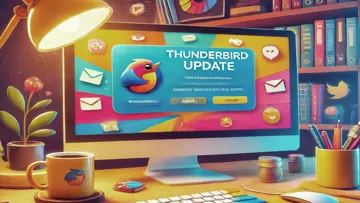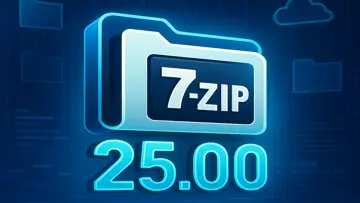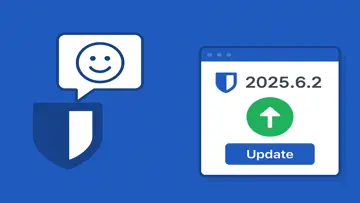Editor’s Review of "Jak zabić nastolatkę (W sobie) by Ikar"
"Jak zabić nastolatkę (W sobie)" is a thought-provoking book by Ikar that delves into the complexities of adolescent emotions and identity crises. Aimed at parents, educators, and young adults alike, this book offers insights into the struggles faced by teenagers and the factors that influence their development. In this review, we will explore the main themes, writing style, target audience, and the overall impact of the book.
Main Themes
The book addresses several fundamental themes surrounding adolescence, including:
- Identity Exploration: The quest for self-discovery during teenage years is a central theme. The author provides a nuanced examination of how teenagers form their identities in a rapidly changing world.
- Parental Influence: Ikar highlights the significant role that parents play in shaping their children's experiences and perceptions during these formative years.
- Peer Pressure: The impact of peer relationships on teenagers is another critical theme; the book discusses both the positive and negative aspects of peer influence.
- Mental Health: The author tackles the rising concerns surrounding mental health issues among adolescents, including anxiety, depression, and social isolation.
Writing Style
Ikar employs a clear and insightful writing style that makes complex psychological concepts accessible to a broad audience. The prose is straightforward yet profound, inviting readers to reflect on their own experiences or those of the adolescents in their lives. Key elements of the writing style include:
- Informative Tone: The book is written with an educational intent that imparts knowledge while maintaining an engaging narrative.
- Anecdotal Evidence: Ikar uses real-life stories to illustrate points, enhancing relatability and providing readers with practical examples of adolescent experiences.
- Inclusive Language: The author adopts language that resonates with both young adults and adults who seek to understand them better.
Target Audience
"Jak zabić nastolatkę (W sobie)" appeals to various demographics, including:
- Parents: It serves as a valuable resource for parents seeking to navigate the turbulent teenage years with empathy and understanding.
- Educators: Teachers and school counselors can benefit from its insights in order to support their students effectively.
- Young Adults: The book speaks directly to adolescents who may be grappling with their emotions and identity crises.
Overall Impact
The impact of "Jak zabić nastolatkę (W sobie)" can be profound. Its exploration of emotional struggles during adolescence resonates deeply within contemporary discussions about mental health. Here are some aspects of its overall impact:
- Encouraging Dialogue: By addressing challenging topics openly, Ikar fosters conversations among families and educators about adolescent issues.
- Raising Awareness: The book brings attention to mental health topics commonly overlooked in society, encouraging readers to take them seriously.
- Aiding Understanding: It aids adults in understanding their teenage counterparts better, potentially fostering stronger relationships based on trust and communication.
Critical Reception
The reception of "Jak zabić nastolatkę (W sobie)" has been predominantly positive. Readers have noted its practicality, citing specific instances where they were able to apply its lessons in real-life situations. Educational institutions have recommended it as supplemental reading material for both parents' workshops and teacher training sessions. Some specific criticisms include:
- The complexity of certain psychological concepts could be daunting for some readers without a background in psychology.
- The title itself may lead to misconceptions about the book’s content; it seeks to metaphorically address emotional struggles rather than promote harmful actions.
"Jak zabić nastolatkę (W sobie)" by Ikar serves as an essential resource for anyone looking to navigate the challenging terrain of adolescence. Its focused exploration of identity, mental health, and relationships provides valuable lessons for all. Despite minor criticisms regarding complexity and title interpretation, it stands out as a significant contribution to discussions around teenage development. For those seeking greater understanding or strategies to support young adults through these pivotal years, this book is undoubtedly worth considering.
Panoramica
Jak zabic nastolatke (W sobie) è un software Commerciale nella categoria Educazione sviluppato da Ikar.
L'ultima versione di Jak zabic nastolatke (W sobie) è attualmente sconosciuto. Inizialmente è stato aggiunto al nostro database su 14/11/2010.
Jak zabic nastolatke (W sobie) viene eseguito sui seguenti sistemi operativi: Windows.
Jak zabic nastolatke (W sobie) non è stato valutato dai nostri utenti ancora.
con UpdateStar freeware.
Ultime recensioni
|
|
Telegram Desktop
Messaggistica sicura e condivisione di file con Telegram Desktop. |
|
|
Realtek Ethernet Diagnostic Utility
Ottimizza la tua connessione Ethernet con Realtek Ethernet Diagnostic Utility! |
|
|
Forza Horizon
Vivi l'ultima avventura di corse open-world con Forza Horizon! |
|
Omni Recover
Omni Recover: il tuo compagno affidabile per il recupero dei dati |
|
|
|
Advanced TCP IP Data Logger
Registrazione affidabile dei dati semplificata con il data logger TCP IP avanzato |
|
|
Keenow Free Smart DNS Suite
Sblocca la tua connessione Internet con la suite gratuita Smart DNS di Keenow |
|
|
UpdateStar Premium Edition
Mantenere aggiornato il tuo software non è mai stato così facile con UpdateStar Premium Edition! |
|
|
Microsoft Edge
Un nuovo standard nella navigazione web |
|
|
Google Chrome
Browser Web veloce e versatile |
|
|
Microsoft Visual C++ 2015 Redistributable Package
Migliora le prestazioni del tuo sistema con Microsoft Visual C++ 2015 Redistributable Package! |
|
|
Microsoft Visual C++ 2010 Redistributable
Componente essenziale per l'esecuzione di applicazioni Visual C++ |
|
|
Microsoft OneDrive
Semplifica la gestione dei file con Microsoft OneDrive |





